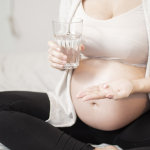
While we have adequate data to support the use of SSRI and SNRI antidepressants during pregnancy, there is less data regarding other classes of antidepressants. Although we less commonly use mirtazapine in pregnancy, several studies have investigated the association between mirtazapine (Remeron) exposure during pregnancy and the risk of major congenital malformations.
Risk of Congenital Malformations
Danish Nationwide Cohort Study (2022): This study analyzed data from 895 pregnancies exposed to mirtazapine included in pregnancy registries from Denmark (1997 to 2016). In this cohort, 31 children (3.5%) were diagnosed with a major congenital malformation, compared to 152 children (4.3%) in the unexposed control group. The findings of this small study suggest that there is not a significant increase in the risk of major congenital malformations associated with mirtazapine use during pregnancy. In addition, the analyses revealed no increased risk of miscarriage or stillbirth.
Systematic Review and Meta-Analysis (2016): A systematic review compiled data from 31 studies, encompassing a total of 334 mirtazapine-exposed cases. The incidence of major malformations in this group was 2.9%, which did not differ significantly from the incidence observed in children exposed to other antidepressants or non-teratogenic medications.
Risk of Neonatal Symptoms
One study showed a trend toward increased risk of respiratory problems and hypoglycaemia; however, no other significant adverse effects in neonates were reported.
Breastfeeding
Four papers reported on 11 cases of exposure to mirtazapine through lactation. No adverse effects were detected.
Long-Term Neurodevelopmental Outcomes
Six papers reported on neurodevelopmental outcomes in a total of 22 cases. The studies varied considerably in terms of the assessments used and the age at which the assessments were performed (ranging from 1.5 months to 12 months). No adverse effects on behavioural development were reported.
Clinical Implications
These data are reassuring and indicate that mirtazapine exposure during pregnancy does not significantly increase the risk of major congenital malformations. The number of mirtazapine exposures documented in the literature remains small with a total of 1229 exposures. It is estimated that at least 500 to 600 exposures must be collected to demonstrate a twofold increase in risk for more common malformations over what is observed in the general population. Larger cohorts are required to detect any changes in risk for less common malformations.
Compared to other antidepressants, we have limited data on risk for neonatal symptoms and long-term neurodevelopmental outcomes.
That said, there may be situations where mirtazapine has certain benefits distinct from SSRIs and SNRIs. There have been several reports indicating that mirtazapine may be helpful for the treatment of hyperemesis gravidarum. Unlike typical serotonin reuptake inhibitor antidepressants, mirtazapine acts as an antagonist at the serotonin 5-HT3 receptor. This makes mirtazapine less likely to cause nausea; there is also suggestion that mirtazapine might have antiemetic effects, and mirtazapine has been used to treat nausea and vomiting in a variety of medical settings. Thus, this may be a situation where mirtazapine is preferred, even in the absence of adequate data on its reproductive safety.
The National Pregnancy Registry for Atypical Antipsychotics
Because the data available regarding the reproductive safety of newer antidepressant medications is sparse, there is a great need to study these medications and their use in pregnancy. The National Pregnancy Registry for Psychiatric Medications is currently enrolling pregnant patients taking psychiatric medications in order to learn more about the reproductive safety of these medications.
Interested patients and clinicians may contact the registry by phone at 1-866-961-2388 or by email at [email protected] to obtain more information.
Ruta Nonacs, MD PhD
References
Ostenfeld A, Petersen TS, Pedersen LH, Westergaard HB, Løkkegaard ECL, Andersen JT. Mirtazapine exposure in pregnancy and fetal safety: A nationwide cohort study. Acta Psychiatr Scand. 2022 Jun; 145(6):557-567.
Smit M, Dolman KM, Honig A. Mirtazapine in pregnancy and lactation – A systematic review. Eur Neuropsychopharmacol. 2016 Jan; 26(1):126-35.




